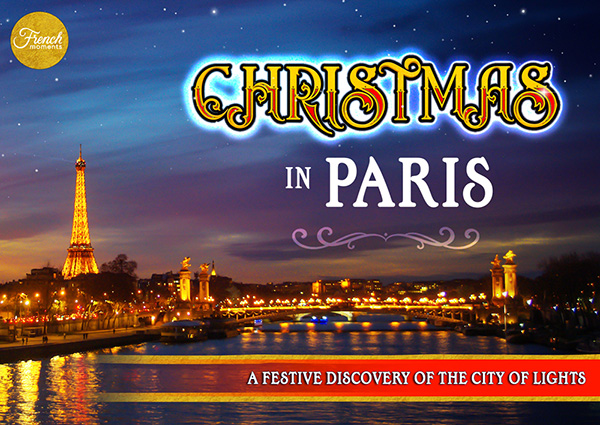If you follow the Glass and Crystal Route through the thick forests of the Vosges du Nord, you'll reach a glass mecca. Less than 10 km from Wingen, the glass-making site of Meisenthal has become a popular destination over the years. The former glassworks, which closed in 1969, has been resurrected to form three centres: the Maison du verre et du cristal, the Centre International d'Art Verrier and the Halle Verrière. And there's a surprise for those who love decorating the tree: the famous glass Christmas baubles!
The Meisenthal glassworks, cradle of Art Nouveau glass
Meisenthal (the valley of the tits) is a significant centre for glassmaking. It is said that glassmakers from the neighbouring village of Soucht settled here after a shortage of wood forced them to close down their business.
In 1702, Duke Leopold 1 of Lorraine authorised them to set up another glassworks on the village's present-day site. The first furnaces were lit in 1711. Housing soon sprang up around the new factory. This explains the glassworks' location right in the village's centre.

The Meisenthal glassworks in 1860
Throughout the 19th and 20th centuries, the complex continued to expand.
From 1867 to 1894, Emile Gallé from Nancy worked with the glassworks, undertaking technical research into glass. Meisenthal became known as the "cradle of Art Nouveau glass".
![Emile Gallé Vase in Musée d'Orsay © Sailko - licence [CC BY 3.0] from Wikimedia Commons Emile Gallé Vase in Musée d'Orsay © Sailko - licence [CC BY 3.0] from Wikimedia Commons](https://frenchmoments.eu/wp-content/uploads/2023/12/Emile-Galle-Vase-in-Musee-dOrsay-©-Sailko-licence-CC-BY-3.0-from-Wikimedia-Commons.jpg)
Vase by Emile Gallé created at Meisenthal. Musée d'Orsay, Paris © Sailko - licence [CC BY 3.0] from Wikimedia Commons
A great success
Around 1920, a large glass hall was built and the company employed around 650 people. Tens of millions of pieces of glass were produced, particularly inexpensive everyday glassware (tableware, drinking glasses, carafes, tumblers, etc.).
Closure and reconversion
But competition from Belgian and German mechanised glassworks got the better of Meisenthal. The glassworks closed its doors for good on 31 December 1969, when the furnaces were finally shut down. The factory, covering an area of one hectare, quickly became a wasteland.
From the 1980s onwards, the buildings were redeveloped to house three activities linked to the site's glassmaking past: the Maison du verre et du cristal, the Centre international d'art verrier (CIAV) and the Halle Verrière.
The buildings of the Meisenthal glassworks
The Meisenthal glassworks site includes a number of buildings that still bear witness to its rich industrial past.
Maison du verre et du cristal
This museum traces all the stages in the manufacture of glass and crystal. You can see a number of creations by the Saint-Louis and Lalique glassworks, and by Emile Gallé.
The International Centre for Glass Art (CIAV)
The CIAV was created in 1998 and occupies the Glassworks' former cutting workshop. According to the centre's website:
"The CIAV is committed to preserving and promoting the technical heritage of its region through a variety of initiatives: skills transfer sessions with former glassmakers, the purchase of old tools, the creation of a mould library - a collection of 1,500 old moulds -, historical research with the Musée du Verre, and so on. In addition to its conservatory role, this work has enabled us to build up a large collection of technical resources that can be used by designers who work in Meisenthal."
![Centre international d'art verrier Meisenthal © Calips - licence [CC BY-SA 3.0] from Wikimedia Commons Site verrier de Meisenthal : le Centre international d'art verrier Meisenthal © Calips - licence [CC BY-SA 3.0] from Wikimedia Commons](https://frenchmoments.eu/wp-content/uploads/2023/12/Centre-international-dart-verrier-Meisenthal-©-Calips-licence-CC-BY-SA-3.0-from-Wikimedia-Commons.jpg)
Centre international d'art verrier in Meisenthal © Calips - licence [CC BY-SA 3.0] from Wikimedia Commons
The CIAV in Meisenthal is a unique place of production, demonstration, transmission of knowledge, creation and discovery. This is where the famous glass Christmas baubles are made, using traditional techniques employed by the old glassmakers of Gœtzenbruck.
The tour takes you up to a specially equipped mezzanine where you can watch the glassblowers at work.
Halle verrière
Located at the heart of the factory, the Great Hall was restored in 2005 and can now accommodate 3,000 people under its glass roof. Cultural events (exhibitions, concerts, etc.) are organised here.
The fantastic story of the Meisenthal Christmas bauble
The former glassworks in the neighbouring village of Gœtzenbruck was founded in 1721 by Jean-Georges Poncet, a glassmaker in the nearby village of Meisenthal. It produced glassware.
In 1858, a severe drought hit the region. Bad luck for the inhabitants, who had got into the habit of decorating their Christmas trees with fruit.
"In 1858, nature was stingy. The great drought deprived the Vosges du Nord of fruit, so the Christmas tree had no ornament to speak of. A glassblower from Gœtzenbruck tried to make up for this injustice by blowing a few glass baubles. He single-handedly triggered a tradition that has spanned cultures."
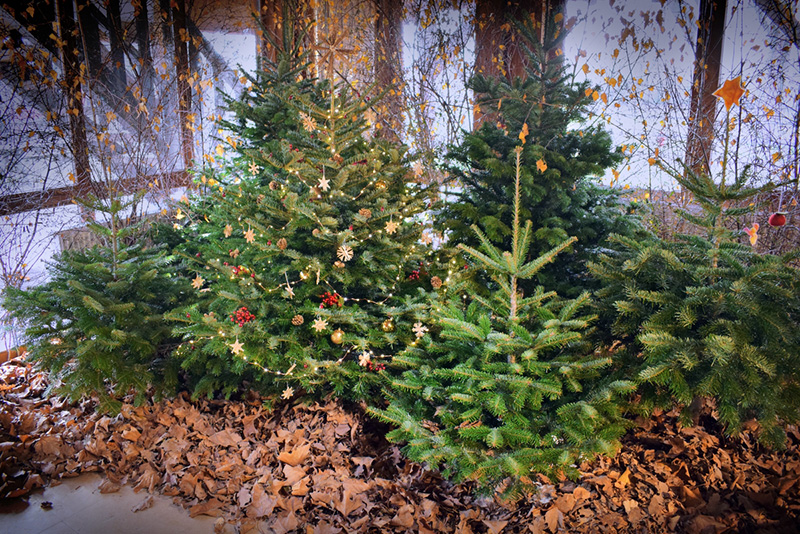
Christmas trees © French Moments
This was the birth of the modern Christmas bauble as we know it today (even if it is all too often made of plastic!). It was a great success: the glassworks at Gœtzenbruck produced up to 250,000 decorative reflective baubles every year.

Meisenthal Christmas Baubles © French Moments
In 1964, the glassworks in Gœtzenbruck closed for good. The industrial production of silver Christmas baubles suddenly ceased and they fell into oblivion. Until the Centre International d'Art Verrier de Meisenthal revived the tradition at the end of the 1990s!
Since 1998, the CIAV has produced around twenty models of glass baubles in two collections:
- the traditional line, directly inspired by old models, and
- the contemporary line, created by contemporary designers and artists.
The glass baubles are now produced under the registered trademark "Meisenthal- France".
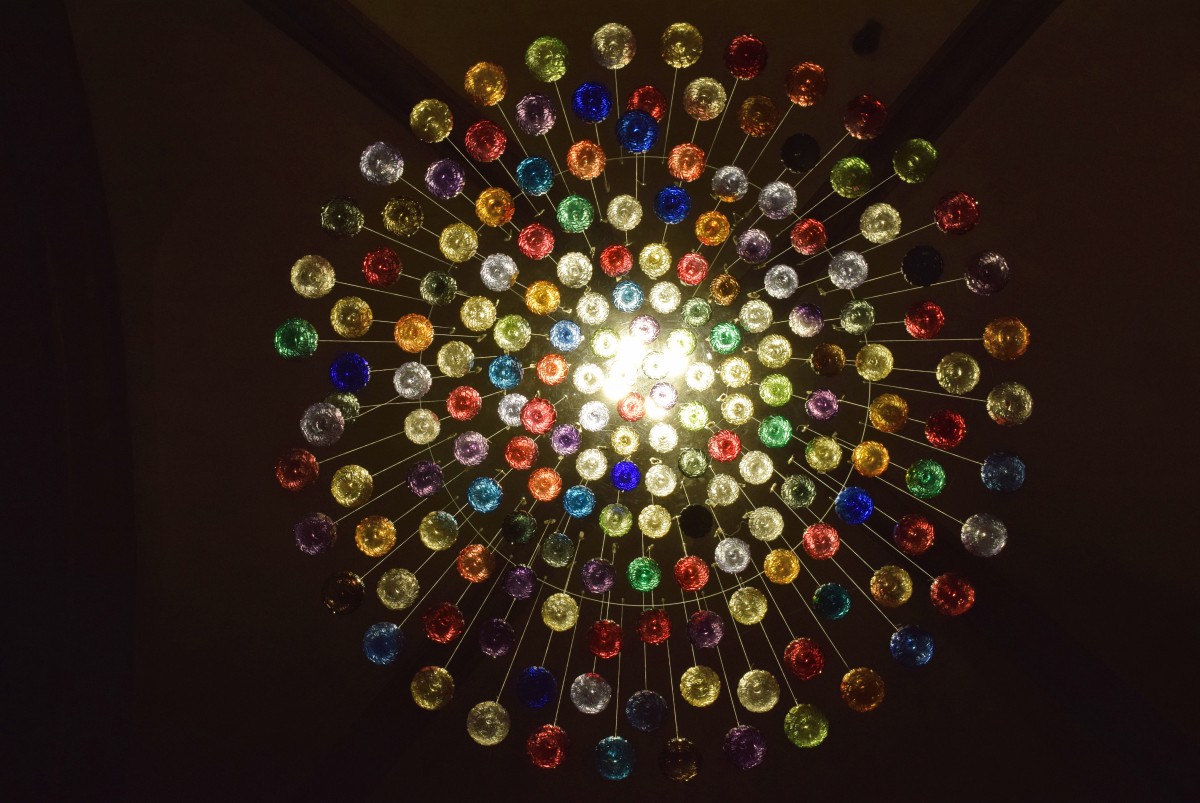
Meisenthal Christmas Baubles in Sainte-Foy Church, Sélestat © French Moments
The Meisenthal baubles editions
Every year, the unveiling of the new edition of the Meisenthal Christmas bauble is a moment eagerly awaited by the public and collectors alike. Here are just a few examples:
POMME DE PIN - Ligne traditionnelle 1999

Boule de Noël "Pomme de Pin" © French Moments
DIVA - Ligne contemporaine 2003 - design : Michel Paysant
ARTI - Ligne contemporaine 2018 - design : Nathalie Nierengarten

ARTI - édition 2018 de la boule de Meisenthal © French Moments
Stella, the 2023 Meisenthal Christmas bauble
The 2023 edition of Meisenthal's Christmas bauble, christened "STELLA", is causing a sensation with its phenomenal success. This 34th Christmas bauble from the Meisenthal glass art centre was created by French designer Jean-Simon Roch. Its shape evokes "the ballet of the glassmakers".
Unsurprisingly, the dancer's slightly more classical silhouette appealed to a broad audience, drawing in the crowds as soon as sales opened. The centre's director, Yann Grienenberger, says the response has been exceptional, with a record 4,000 copies sold online in just 48 hours.
In front of the sales chalet at Strasbourg's Christmas market, the atmosphere buzzed from the first hours as customers, bundled up for the cold, rushed to get their precious Stella baubles, limited to two per person.
The atmosphere is lively, but the security guard keeps a close eye on things, handing out tickets just like at the butcher's. Despite the hustle and bustle, the shopping experience remains joyful, with groups forming and lively discussions taking place.
Artisanal production, already at 40,000 balls since July, will reach 75,000 by Christmas, but a new batch is scheduled for February for latecomers.
The magic of Stella seems to have conquered hearts, making this year's edition a real festive success.
Where can you buy Meisenthal Christmas baubles?
Meisenthal Christmas baubles are on sale at the Meisenthal glassworks shop in Place Robert-Schuman.
But if you can't make it to the Pays de Bitche, don't worry, other sites offer the famous glass baubles for sale while stocks last (check here) :
- The Tourist Office of Nancy situated on Place Stanislas.
- Agence Inspire Metz – office de tourisme on Place d’Armes in Metz.
- The Metz Christmas Market (at the chalet adjacent to the Qualité-MOSL chalet in Metz on Place de la République).
- The Tourist Office of Sarreguemines.
- The Tourist Office of Forbach situated in Avenue Saint-Rémy.
- The Strasbourg Christmas Market on Place Benjamin-Zix and at La Petite France.
- The Sainte Barbe complex in Sélestat.
- The Tourist Office of Colmar on Place Unterlinden.
- At Showroom 10 sur Dix in Paris.
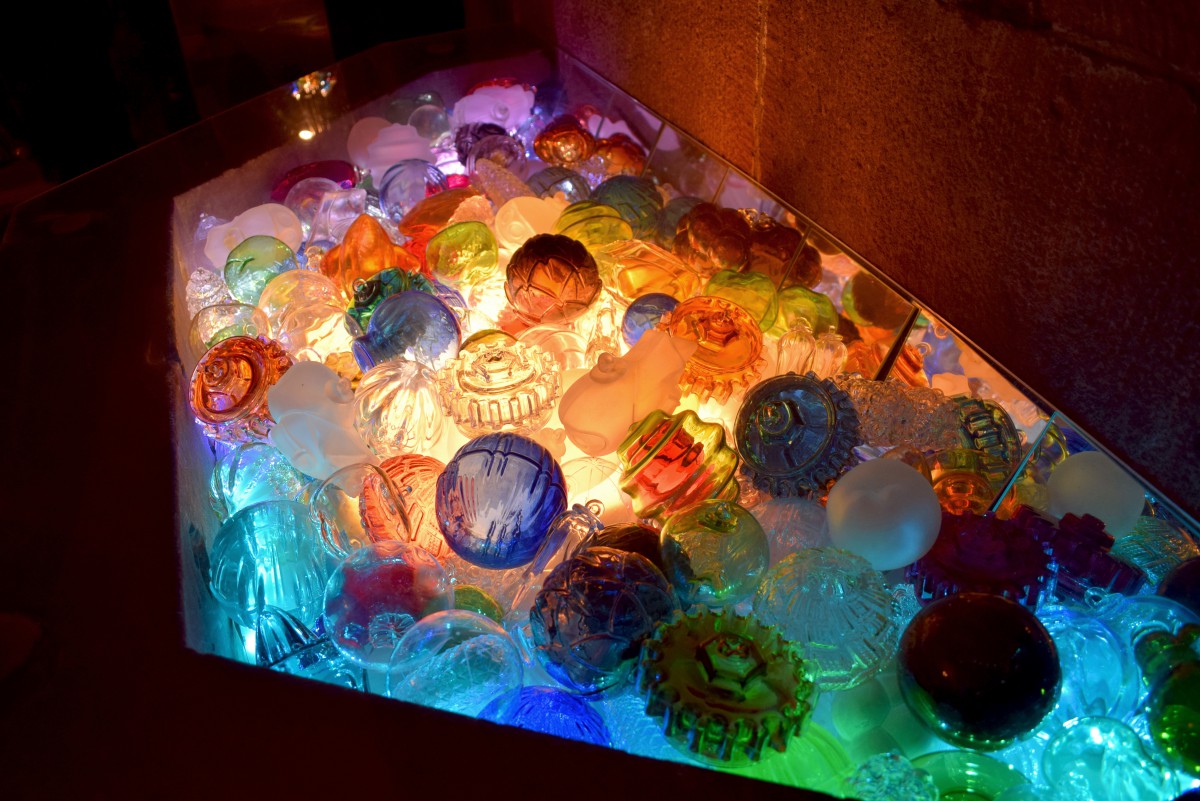
The Meisenthal boules collection in the crypt of St Georges church in Sélestat © French Moments
Other sites near the Meisenthal glassmaking site
On the heights of the village, in the direction of Wingen-sur-Moder, are two monuments erected on the former border between the Duchy of Lorraine and the County of Hanau-Lichtenberg (Alsace):
- The Stone of the Twelve Apostles. This monolith, the origin of which is unknown, is a 4.40 m high block of pink sandstone. Also known as the "Breitenstein", it has been topped by a calvary since the 18th century.
- The Wingen Column. Built during the Napoleonic era, this is a former boundary marker. The base of the old pillar is believed to be of Gallo-Roman origin. A little further on, on the left, there is a superb view of Meisenthal.
There are many sites within a thirty-minute drive of the Meisenthal glassworks. Here are a few ideas for outings:
- The historic village of La Petite-Pierre and the bucolic region of Alsace Bossue
- The ruined castles of Lichtenberg, Wasenbourg, Falkenstein and Grand Wintersberg
- The Lalique Museum in Wingen-sur-Moder
- The crystal glassworks at Saint-Louis-lès-Bitche
- The small town of Bitche and the Vauban citadel
- The Maginot Line works: Fort Casso and Simsherhof
- The picturesque lake of the Etang de Hanau
![Citadelle de Bitche © V.degouy - licence [CC BY-SA 4.0] from Wikimedia Commons copy Citadelle de Bitche © V.degouy - licence [CC BY-SA 4.0] from Wikimedia Commons copy](https://frenchmoments.eu/wp-content/uploads/2023/12/Citadelle-de-Bitche-©-V.degouy-licence-CC-BY-SA-4.0-from-Wikimedia-Commons-copy.jpg)
Bitche Citadel © V.degouy - licence [CC BY-SA 4.0] from Wikimedia Commons copy
Learn more about the Meisenthal glassworks
Some websites:
- The website of the Meisenthal glassworks
- The site of the Centre International d'Art Verrier
- The Pays de Bitche Tourist Board
- My article on the Glass and Crystal Route in Lorraine
- Read this article in French on our blog Mon Grand-Est.
If you like my articles or find them useful, don't hesitate to share them on X (Twitter) or Facebook. I'd love to, and what's more, it'll motivate me to keep writing more! 🙂
Inspired by reading this article on the Meisenthal glassmaking site? Here are some pins for Pinterest:
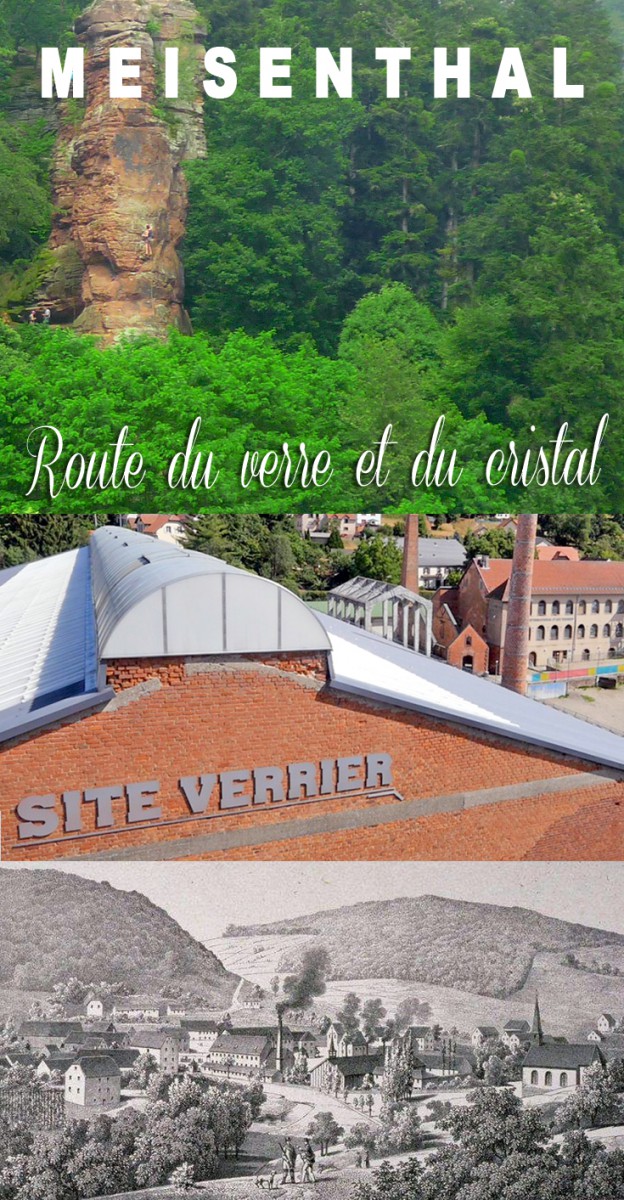
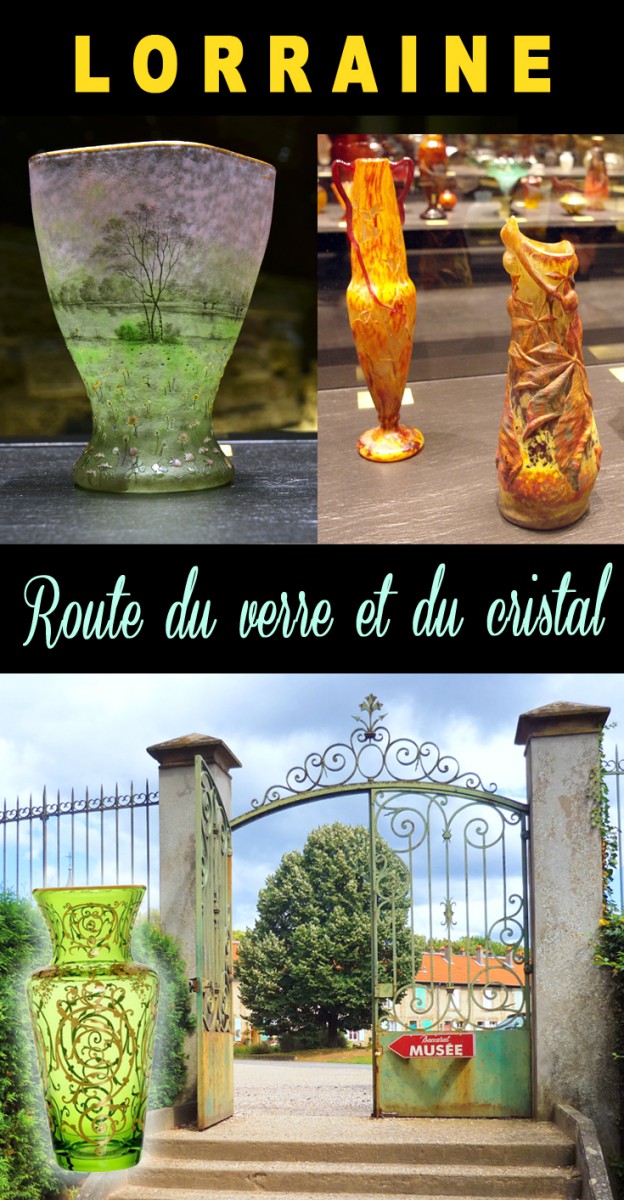


![Halle Verrière Meisenthal © Cadhame - licence [CC BY-SA 3.0] from Wikimedia Commons Site verrier de Meisenthal : la Halle Verrière © Cadhame - licence [CC BY-SA 3.0] from Wikimedia Commons](https://frenchmoments.eu/wp-content/uploads/2023/12/Halle-Verriere-Meisenthal-©-Cadhame-licence-CC-BY-SA-3.0-from-Wikimedia-Commons.jpg)
![Meisenthal Boule de Noël © Peter.Pielmeier - licence [CC BY-SA 4.0] from Wikimedia Commons site verrier de Meisenthal - Meisenthal Boule de Noël © Peter.Pielmeier - licence [CC BY-SA 4.0] from Wikimedia Commons](https://mon-grand-est.fr/wp-content/uploads/2023/12/Meisenthal-Boule-de-Noel-©-Peter.Pielmeier-licence-CC-BY-SA-4.0-from-Wikimedia-Commons.jpg)
![Pierre des 12 apôtres © Peter 111 - licence [CC BY-SA 3.0] from Wikimedia Commons Pierre des 12 apôtres © Peter 111 - licence [CC BY-SA 3.0] from Wikimedia Commons](https://frenchmoments.eu/wp-content/uploads/2023/12/Pierre-des-12-apotres-©-Peter-111-licence-CC-BY-SA-3.0-from-Wikimedia-Commons.jpg)
![Colonne de Wingen © Peter 111 - licence [CC BY-SA 3.0] from Wikimedia Commons Colonne de Wingen © Peter 111 - licence [CC BY-SA 3.0] from Wikimedia Commons](https://frenchmoments.eu/wp-content/uploads/2023/12/Colonne-de-Wingen-©-Peter-111-licence-CC-BY-SA-3.0-from-Wikimedia-Commons.jpg)
